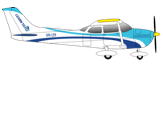
April 24, 2025
Error Management Training: Learning from Mistakes and Developing Resilience
In aviation, errors are inevitable, but how pilots and crew respond to them determines safety outcomes. Error Management Training (EMT) is a crucial part of pilot education, ensuring that aviation professionals develop the skills to identify, mitigate, and recover from errors before they escalate into critical incidents. Modern flight training goes beyond technical proficiency—it instills resilience, decision-making, and situational awareness to handle unexpected challenges effectively.
For those pursuing a pilot license in Australia, EMT is essential to developing safe flying habits early on. Similarly, aspiring flight instructors working toward a flight training in Australia must be well-versed in error management to teach students how to recognise and correct mistakes proactively.
Understanding Error Management Training (EMT)
Error Management Training is based on the principle that errors should not be seen as failures but as learning opportunities. Unlike traditional training, which often focuses on error avoidance, EMT teaches pilots to anticipate, recognise, and mitigate errors when they occur. The primary objectives of EMT are:
- Error detection – Recognising deviations or misjudgments before they escalate.
- Error containment – Taking corrective actions to prevent minor errors from turning into major issues.
- Error recovery – Implementing strategies to regain control and ensure flight safety.
By understanding why errors occur and how they propagate, pilots develop a mindset that prioritises continuous improvement rather than fear of mistakes.
The Role of Human Factors in Errors
Aviation is a highly complex environment where human factors play a significant role in errors. Stress, fatigue, workload, communication breakdowns, and cognitive overload can all contribute to mistakes in the cockpit. EMT focuses on these human factors, teaching pilots how to recognise their own limitations and implement safeguards.
Common causes of pilot errors include:
- Situational awareness lapses – Losing track of altitude, airspeed, or navigation data due to distractions.
- Fatigue-induced misjudgment – Making poor decisions due to exhaustion or sleep deprivation.
- Automation dependency – Over-reliance on autopilot systems leading to skill degradation.
- Decision-making under pressure – Struggling to assess risks quickly in emergencies.
By addressing these factors through EMT, pilots can develop coping mechanisms to manage stress and workload effectively.
Developing a Culture of Learning from Mistakes
In the past, aviation training emphasised rigid adherence to procedures, often discouraging open discussions about mistakes. However, the modern aviation industry recognises that fostering a culture of learning from errors leads to better safety outcomes.
Pilots are now encouraged to debrief after each flight, discussing what went well and identifying areas for improvement. This practice, known as non-punitive reporting, allows pilots to share experiences without fear of disciplinary action, helping others learn from real-world scenarios. Many airlines and flight schools implement threat and error management (TEM) frameworks, which focus on analysing how threats (such as adverse weather or system malfunctions) interact with human errors and how they can be mitigated effectively.
Building Resilience Through Training
Resilience in aviation refers to a pilot’s ability to remain composed, adapt to changing situations, and recover from errors effectively. EMT fosters resilience by incorporating scenario-based training that exposes pilots to unexpected challenges.
Crew Resource Management (CRM)
Effective communication and teamwork are essential for error management, especially in multi-crew operations. Crew Resource Management (CRM) training teaches pilots how to coordinate with co-pilots, air traffic controllers, and cabin crew to resolve issues collaboratively. CRM emphasises assertiveness, active listening, and shared decision-making, ensuring that errors are caught and addressed early.
Stress and Fatigue Management
Fatigue is a leading contributor to pilot errors, making it crucial for pilots to understand its impact. EMT includes training on rest cycles, nutrition, and mental conditioning to help pilots maintain peak cognitive performance. Techniques such as mindfulness, breathing exercises, and structured rest periods are incorporated into training programs to improve focus and reaction times.
Error Management in Solo vs. Multi-Crew Operations
Error management strategies differ between solo flying and multi-crew operations. In solo flights—such as those undertaken by private pilots—there is no co-pilot to provide a second perspective. This makes self-assessment, decision-making, and situational awareness even more critical. Those working undertaking a pilot course must learn to recognise personal limitations and develop self-correcting habits.
In contrast, airline pilots operate in structured crew environments where delegation and communication are key to managing errors. Multi-crew training emphasises cross-checking, redundancy, and standard operating procedures (SOPs) to ensure errors are detected before they escalate.
Error Management Training is an essential component of modern aviation education, helping pilots develop the skills and mindset necessary to handle mistakes effectively. By focusing on error detection, containment, and recovery, EMT ensures that pilots remain resilient under pressure.
Ultimately, aviation safety relies on continuous learning, adaptability, and resilience. By embracing error management as a fundamental part of pilot training, the aviation industry ensures that every flight is safer than the last.








